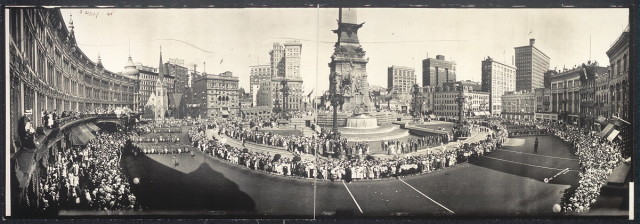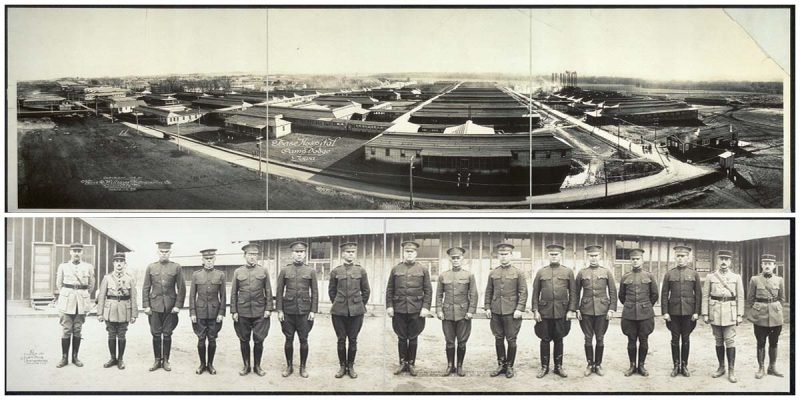A panorama is any wide-angle view or representation of a physical space. Not long after the introduction of the Daguerreotype in 1839, photographers began assembling multiple images of a view into a single wide image. These long panoramic photographs show U. S. military personnel and camps, patriotic parades, and European battlefields and cemeteries related to WWI.




The development of panoramic cameras was a logical extension of the nineteenth-century fad for the panorama. One of the first recorded patents for a panoramic camera was submitted by Joseph Puchberger in Austria in 1843 for a hand-cranked, 150° field of view, 8-inch focal length camera that exposed a relatively large Daguerreotype, up to 24 inches (610 mm) long. A more successful and technically superior panoramic camera was assembled the next year by Friedrich von Martens in Germany in 1844. His camera, the Megaskop, used curved plates and added the crucial feature of set gears which offered a relatively steady panning speed. As a result, the camera properly exposed the photographic plate, avoiding unsteady speeds that can create an unevenness in exposure, called banding. Martens was employed by Lerebours, a photographer/publisher. It is also possible that Martens camera was perfected before Puchberger patented his camera. Because of the high cost of materials and the technical difficulty of properly exposing the plates, Daguerreotype panoramas, especially those pieced together from several plates are rare.







To create the panoramic photographs above, the soldiers would be arranged in a large arc-shaped line around a specialized camera. While making the exposure, the camera would start at one end of the line and rotate to the other end at a fixed rate. It was important to find a location where all the soldiers could be positioned in similar light with few harsh shadows. Cloudy or bright overcast days would produce the best results. If you examine the pictures above you will see that, in two of them, the shadows on the faces at one end of the line are on the right and are on the left at the other end of the line.




When the First World War finally ended on 11 November 1918, official, commercial and snapshot photographers were in place to document it, responding to the moment with photographs that were often overtly symbolic in their realization.
Photos: The Library of Congress
